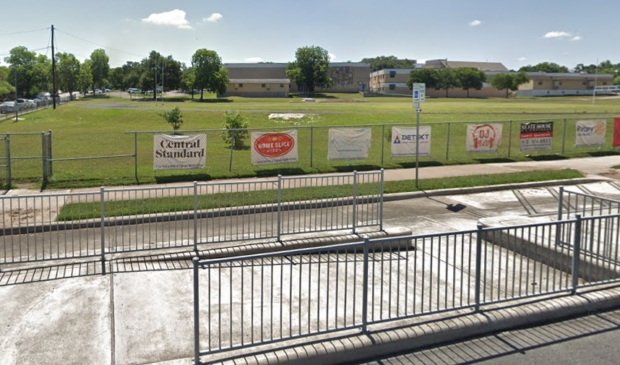Solution to boost revenue for transit leads to broad debate over city signage policy
Thursday, July 25, 2019 by
Ryan Thornton The Austin City Council will be considering limited exceptions to a city ban on off-premise advertising at its Aug. 22 meeting in order to allow Austin public schools and the Capital Metropolitan Transportation Authority to display simple, non-electronic advertisements at their facilities, such as bus shelter ads and banners on chain-link fences.
The change would amend a general ban that stretches back to 1983.
Under the ordinance, Capital Metro would be permitted to install no more than one advertising poster at each transit station and schools could attach advertising posters or banners to fences surrounding school properties. Critics are divided over whether the proposed ordinance goes too far or not far enough.
Last year, when the Capital Metro Board of Directors voted to make fares across all modes free for K-12 students, asking the city to amend its ban on off-premise advertising was floated as a potential way to offset the program’s estimated $250,000-$300,000 annual revenue loss.
According to Capital Metro CEO Randy Clarke, Council Member Pio Renteria, who also sits on the agency’s board, initially proposed the idea as a sort of friendly trade-off for the community benefit provided by the new fare structure. With Capital Metro’s revenue “more or less tapped,” in Clarke’s words, board members passed a resolution in December asking Council to consider allowing advertising at bus stops and transit facilities as a relatively simple way to help pay for such programs.
Austin Independent School District officials, desperately in need of funds, immediately saw the resolution as a chance to secure the right to sell ad space to private entities around school perimeters where it can be easily seen by passersby.
Council responded to both requests at the end of January, directing City Manager Spencer Cronk to develop specific amendments that would create exceptions to the off-premise advertising ban for Capital Metro and AISD. However, whereas both organizations were hoping to secure the right to install digital advertisements at appropriate locations, the resulting ordinance made no such allowance.
Rather, the ordinance crafted a new type of advertisement, called “sponsorship signs,” that were subject to rigorous design standards in order to set them apart from traditional advertisements. At a maximum of 12 square feet and featuring no more than two contrasting colors, the stated purpose of the signs is simply to identify operators and sponsors of facilities.
City staff held several stakeholder meetings in April, receiving a diverse range of feedback on the ordinance and hearing numerous concerns, chiefly the impact on motorists’ attention in light of an ongoing traffic fatality crisis. Residents generally complained that the changes were too extreme or not extreme enough.
When the Planning Commission took up the ordinance for discussion in June, several residents objected to the idea of giving the two organizations exclusive privilege to advertise, when many public and private groups could benefit from such rights.
According to Elizabeth Bradbury, professor at the University of Texas and member of the Bryker Woods Elementary Parent Teacher Association, that distinction makes sense: “Public services are given all kinds of exemptions that private companies don’t get, on a regular basis, because they serve the public good.”
However, Bradbury continued, stopping short of allowing digital ads places arbitrary limits on potential revenue. “As you guys well know,” she said, “zoning differences between schools as well as the differences in the footage of fences actually create huge variable potential in earning based off of static signs alone, whereas digital signs would actually allow schools to have more egalitarian opportunity.”
For its part, Capital Metro spokesperson Mariette Hummel says the agency still thinks digital advertisements would be the best option in at least some locations. As written, the ordinance would restrict even the illumination of the sponsorship signs, despite the provision that they be faced away from any portion of the right of way with vehicle traffic.
When crafting the ordinance, Assistant City Attorney Patricia Link said city staffers did not consider digital advertising, though it had been the wish of AISD and Capital Metro.
“Our city code right now does not allow off-premise digital advertising,” she explained. “The resolution did not speak to digital off-premise advertising; it was talking about a limited exception to off-premise, so to be consistent with what is in the current code, we went with non-digital signs and that’s the recommendation of staff.”
With the item postponed at Council’s June 20 meeting, the public will have an additional opportunity to speak on the matter before Council votes on Aug. 22.
Photo courtesy of Google maps.
The Austin Monitor’s work is made possible by donations from the community. Though our reporting covers donors from time to time, we are careful to keep business and editorial efforts separate while maintaining transparency. A complete list of donors is available here, and our code of ethics is explained here.
You're a community leader
And we’re honored you look to us for serious, in-depth news. You know a strong community needs local and dedicated watchdog reporting. We’re here for you and that won’t change. Now will you take the powerful next step and support our nonprofit news organization?








